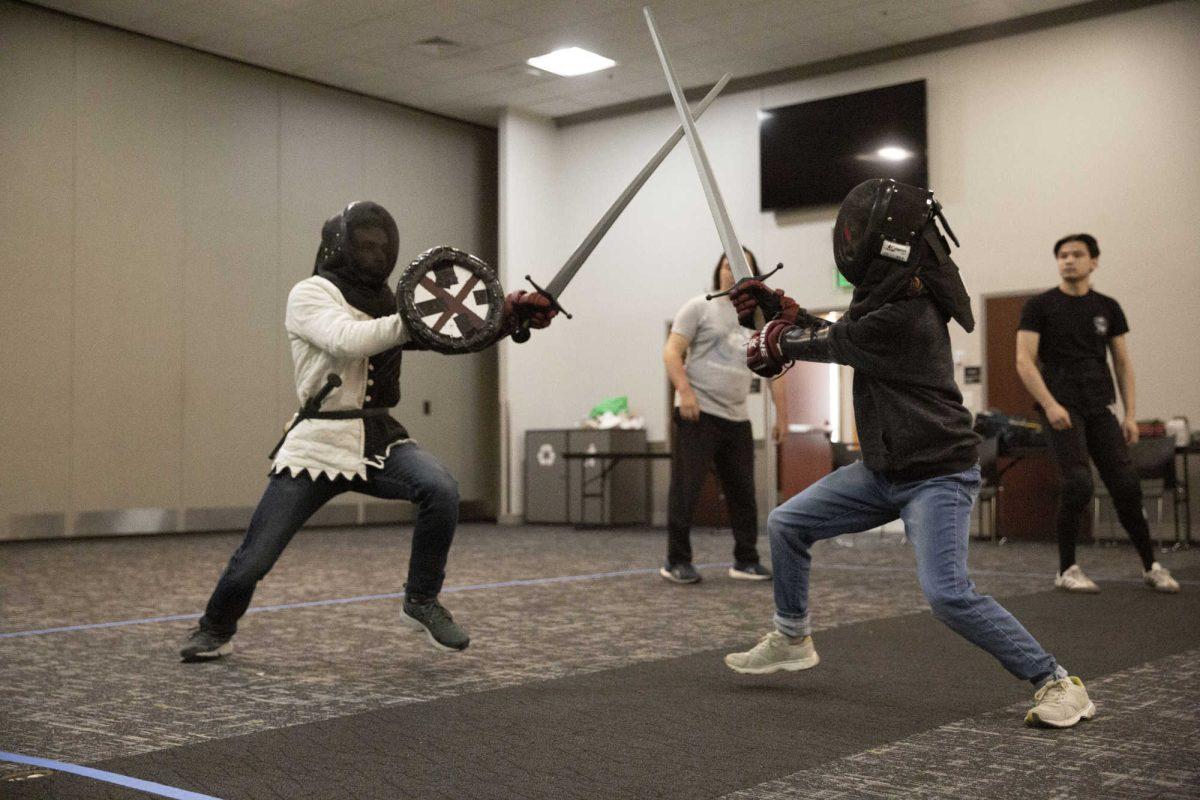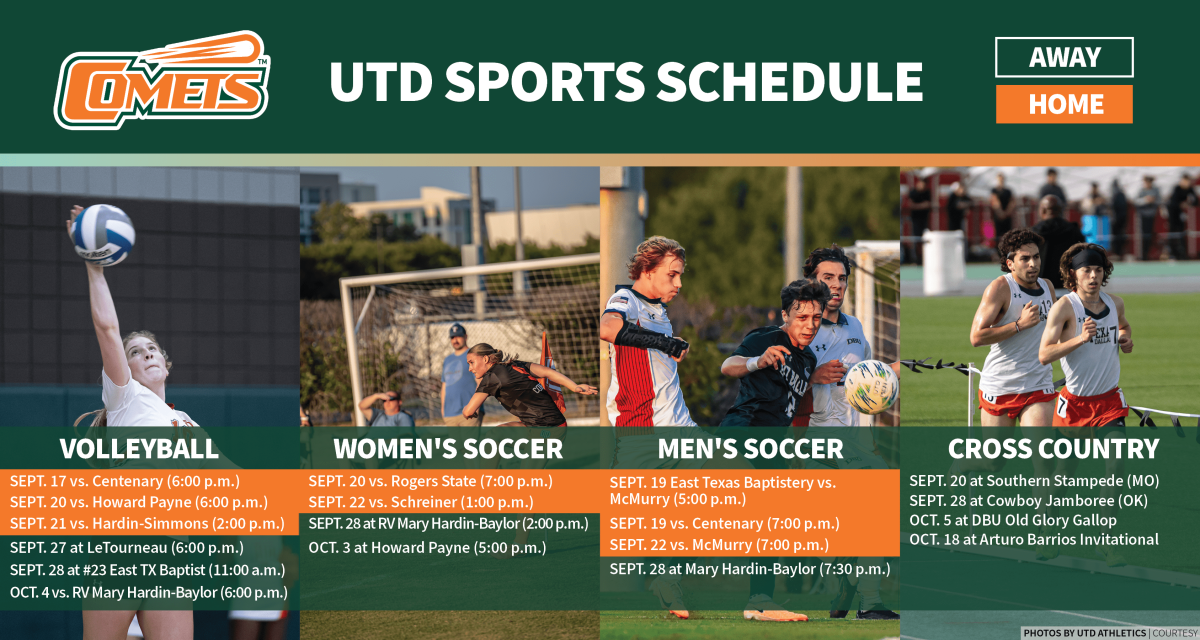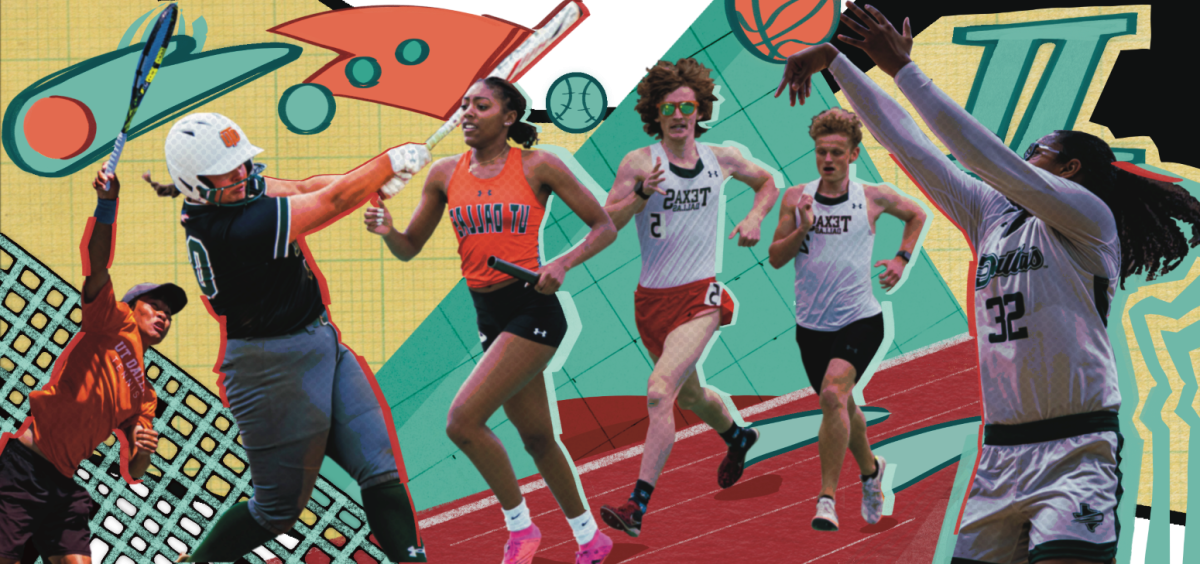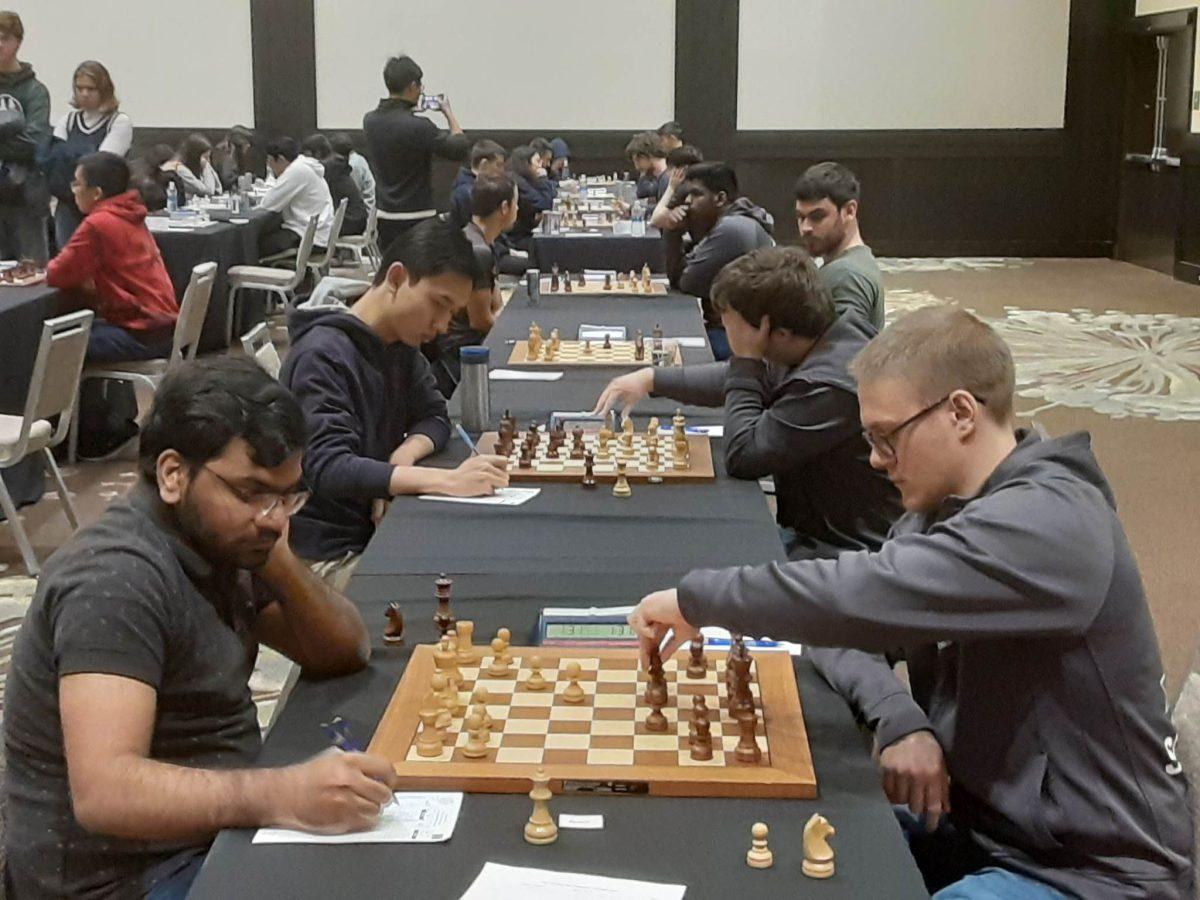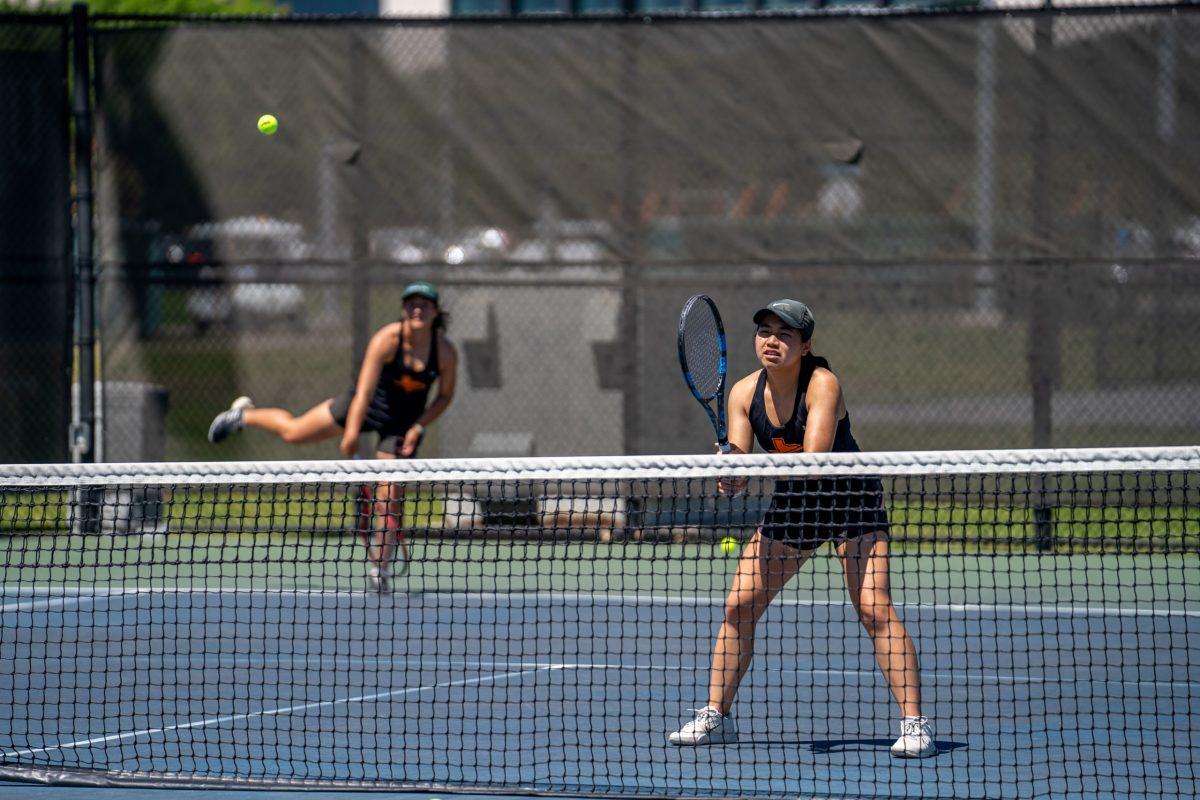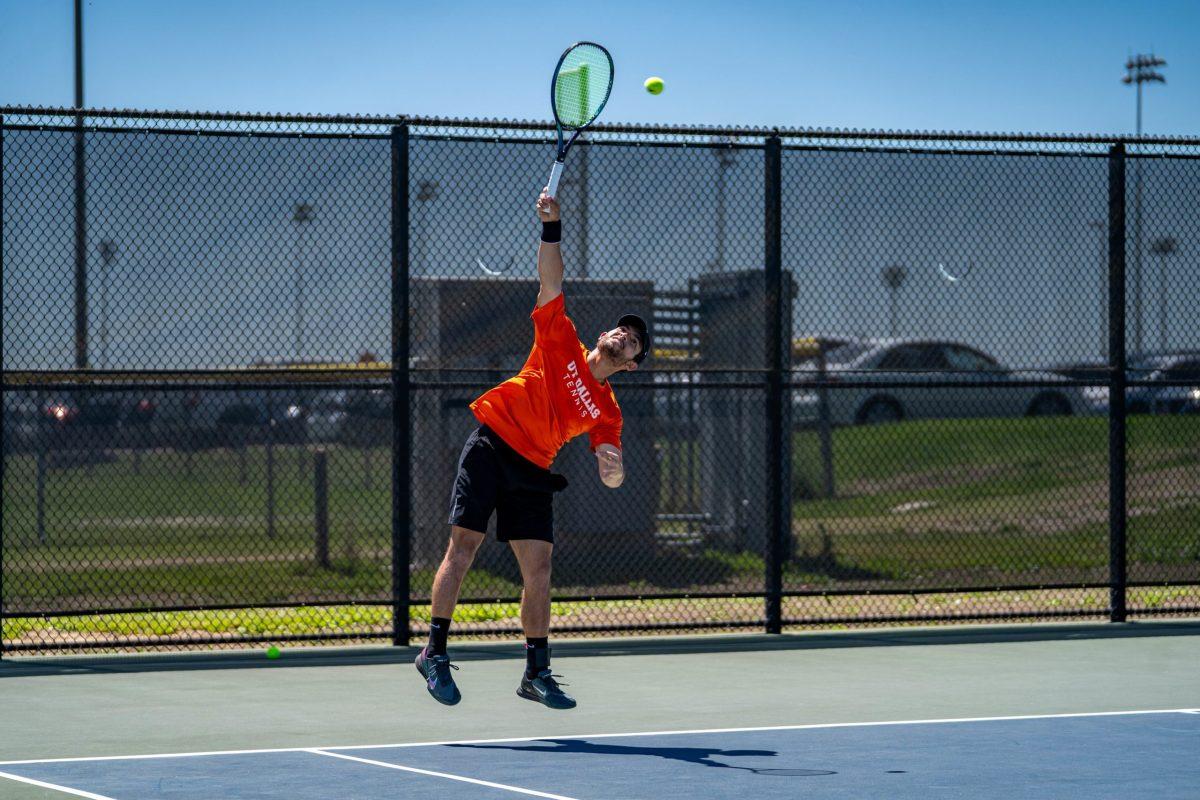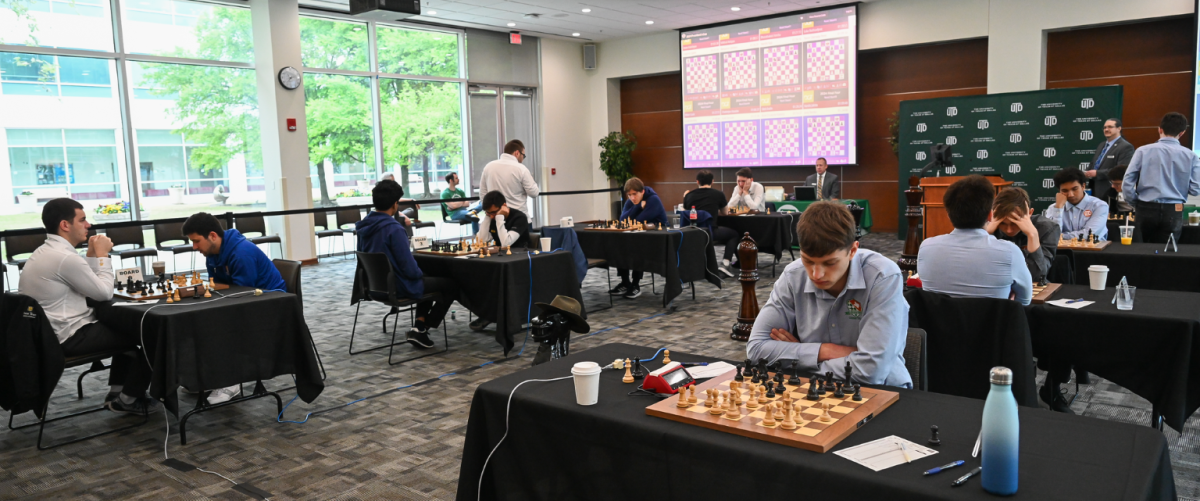UTD swordsmen clashed blades and brought home first and third-place accolades on April 2 in the second-ever Texas College HEMA Alliance Tournament.
UTD’s Historical Swordfighting Guild — the team that brought home awards — has taught Historical European Martial Arts or HEMA since 2021. The guild has 24 registered members and is still growing, making it one of the biggest collegiate sword fighting groups in Texas. This organization allows students to learn about Middle Age history and master sword combat for competitive tournaments such as the HEMA Alliance Tournament, which UTD hosted this year.
Kenton Casto, a cybersecurity senior at Collin College and assistant coach for UTD’s sword fighting club, placed first in the tournament by winning all his games. Casto said he joined the club in 2021 and has been coaching ever since.
“It was really fun. I’m here for friends, not here for any emotionally deep meaning in relation to swords,” Casto said. “So that was pretty interesting. I’ve made a lot of pretty cool friends here. I hope I can have many more close friendships from the people that I teach.”
The growing intercollegiate sport invited A&M Galveston, the University of Dallas and LeTourneau University to engage in one-on-one combat. While HEMA includes Victorian bare-knuckle boxing, Nordic folk wrestling, Spanish rapier fencing and French poleaxe fighting, this tournament almost exclusively focused on longsword combat, which utilizes a straight-bladed two-handed sword as taught by the UTD Historical Swordfighting Guild.
“So we meet at practice and when a new person shows up, I’ll take them aside and I’ll teach them the fundamentals and the basics,” Casto said. “As a coach, I teach new people. I take them aside and I help out around. I critique people and I spar people as well.”
The UTD Historical Swordfighting Guild was founded by mechanical engineering senior Nicholas Alexander in the fall semester of 2021, who has since been teaching his guild members sword martial arts from the “Flos Duellatorum,” one of the oldest surviving Italian fencing manuals in human history. Its two-handed techniques were widely used throughout the tournament and secured their victory, and the Guild teaches this technique every Wednesday and Friday from 4 to 6 p.m. at Point North Park.
“This is what differentiates HEMA from fencing or Olympic fencing,” Alexander said. “You’re actually looking for quality of actions, because what this is supposed to represent is historical unarmored combat.”
These 15th-century fighting styles were some of the finer martial arts in the late European Middle Ages, and they were largely thought to be lost until 1990. Since then, they’ve become historical manuscripts which guild members now study to both to improve their martial art proficiency and understand the historical context of the Middle Ages and historical European culture.
“The medieval texts were written by sword masters that were usually somewhat like national treasures of the country they were associated with back in the day,” Casto said. “As such, most of the manuals are written in a kind of code. With today’s increase in education level and the ability for worldwide communication, it’s very easy to understand what’s going on in the manual if you study it enough.”
Brandon Vaughn, one of the judges for this tournament and a 3-year instructor at the Dallas School of Historical Fencing, said he was impressed by the sportsmanship and turnout of the event.
“As far as it being the first collegiate event [for UTD], I mean, the space was awesome,” Vaughn said. “The fighters are really well mannered.”
The guild is currently welcomed to compete at higher levels beyond college. Alexander promises that this is only the beginning for UTD’s Historical Swordfighting Guild.
“What you see [at the tournament] is actually the beginning of what we’re calling the Texas College HEMA Alliance,” Alexander said. “We are going to be banding together as college schools across Texas, to promote HEMA at other universities and alternatives.”
This year’s tournament was a great experience for business junior Savannah Skinner, who competed for the first time. Skinner said she hopes that the tournament continues to grow in size.
“Personally the biggest challenge was because of the lack of structure or divisions, you could go against anybody,” Skinner said. “So the biggest challenge would be just the extreme variety and probably experience differing levels. Size for me does not affect [the tournament] at all. It just gives me a different set of moves I can do. So definitely just experience is probably the biggest challenge.”
Skinner added that she plans to train over the summer and participate in next year’s tournament as well.
“It’s super fun,” Skinner said. “You should just come to a [practice session], you get three free ones. That’s another thing. Three free then $35 and you’re good for the semester. I recommend.”

